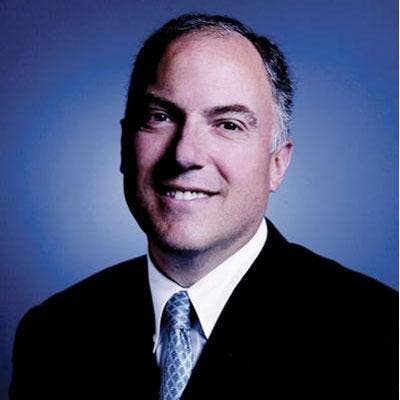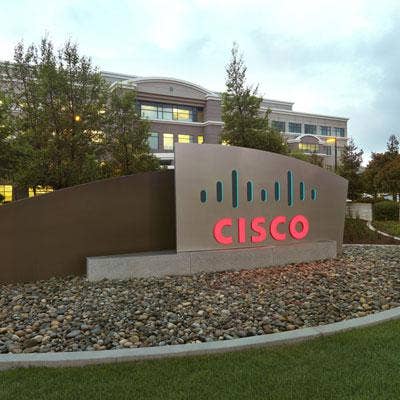Presidio CEO Talks Cisco Acquisitions, Cloud Strategy And Not Hiring 'Jerks'

Cagnazzi On Cloud, Cisco And Channel
The cloud is changing how channel partners buy, sell and provide services. Not many solution providers know how to successfully transform themselves and their customers to become digital-oriented businesses better than Presidio's CEO Bob Cagnazzi, named on CRN's Top 25 Innovators Of 2016.
Cagnazzi is driving faster innovation and growth inside his New York-based $3 billion-plus company by restructuring how its sales and engineering teams work in the digital age, while also keeping the company's motto of not hiring "jerks" no matter how talented they are. The interview with Cagnazzi came in the midst of a CRN report that Apollo Global Management Group, which owns Presidio, is talking to bankers about potentially going public.
Cagnazzi spoke with CRN about Cisco acquisition strategy, the need to create all-star engineering groups and his advice for smaller channel partners on how to grow in today's complex market.

Presidio is one of Cisco's top channel partners in North America. What's driving Cisco sales?
Cisco has been really innovative making acquisitions in spaces that we're in and aligning with our customers' demand. They're acquiring the right technology. So if you look at the [$1.4 billion] Jasper [Technologies] acquisition around IoT, their cloud acquisitions and obviously the investments in infrastructure to help create more digital-ready infrastructure solutions -- they continue to be a great partner with us. But we have expanded the complementary vendor partner set over the past couple of years as well.

Speaking of acquisitions, how have you kept business momentum moving forward through all of your purchases?
We've made around 10 acquisitions since 2004 and the senior management team from all of the acquisitions remain active in the business. We have a great history of retaining and developing people. It's a very team-oriented atmosphere here. We believe in teams selling.
We don't like to hire people who are jerks. We feel like they're more detrimental to the business no matter how talented they are.

Where is Presidio's biggest growth areas and what is fueling customers spending in 2016?
We're seeing a lot of growth in our cloud solutions, cybersecurity solutions and our digital-ready infrastructure area is growing at a bit of a lower rate, but that's got some traditional networking and things in there too.
The [cloud] transition for our clients is what's fueling our growth. That need to become a more digital-oriented business is critical. That starts with us helping to plan to create this digital-ready infrastructure that has all the aspects they want in terms of agility, fast time to market, mobility, security, etc.
What did Presidio do internally to transition its customers into the digital age?
We took all of the core technology competencies we've had – networking, collaboration, data center, mobility, infrastructure, security – and we reoriented them to deliver solutions in what we think are the three critical areas for our customers. Creating a digital-ready infrastructure, security and cloud.
So we peeled off some of our highest level of talent in specific areas and created groups focused on those areas.

Can you elaborate on these groups spearheading this transformation?
What we did about two and a half years ago, was we took some of our highest-level talent in the cybersecurity space and created a cybersecurity practice, which has been growing tremendously. Our security revenue makes us one of the largest security solution providers in our space in the country.
About 18 months ago we formed a group focused on IoT-based solutions.
For our latest [cloud] group, we've taken all the assets we have in business around the cloud – private, hybrid, multi-cloud development – then added one very critical piece back in November with the acquisition of Sequoia Worldwide.

What are the Sequoia people bringing to the cloud table?
They have 50 or 60 cloud ninjas that help our clients create a multi-cloud strategy, assess the workloads and where they belong, and help with the traditional Presidio teams that design that private cloud, multi-cloud infrastructure -- then implementation and then management.

How many engineering all-stars are in these three groups?
In our cloud group 60 or so people. The cybersecurity team and IoT team are probably 30 to 40 people. These are substantial groups. These are not sales people. These are architects and engineers that are designing, developing and implementing the high-end solutions.
Then we got 1,600 other engineers that will supplement those teams in the field, but the lead architecture and the lead engineering comes out of these high-level groups.

Just how big of a benefit is creating these high-level groups?
The benefit is that you're going to consolidate the resources so they can be more focused and you can focus the company around it. It enables us to create solutions and deliver them in a more consistent manner and enables our sales people to understand better what the solutions are. The sales teams also get enabled better to how to sell.
Looking at cybersecurity, a lot of our cyber folks we had were in different geographies and across infrastructure-type of business units. So pulling them out and creating a united cybersecurity group raises the elevation of the solution set within the business and for our customers.

How has Presidio's IoT practice evolved over the years?
We've been creating connected vehicle-type solutions for a while. It started with the freight railway system in what's called positive train control solutions. We adapted that technology to connected vehicle solutions around law enforcement, fleet management, public transportation and the like. We also took that technology and created connected building solutions and connected community solutions. With that comes a deep data analytics practice to help understand what those interactions are. We now also do retail analytics in our data analytics group.

What advice would you give to a smaller channel partner looking to grow in today's market?
There's an increase of complexity around infrastructure for [channel partners] today. It's never just a network solution anymore.
So for a $200 million networking partner out there, they have to make a decision in how much they're going to invest in multiple technology stacks and how deep they want to get to be relevant with the client base and whether they have the scale to do that to the effect you need today.

As a managed service specialist yourself, what advice would you give them around services?
Clients are looking for services to be delivered in a different manner today. So look for more robust managed services -- which is a significant investment -- that you need to be able to scale over a large set of customers.
Look at highly differentiated, advanced services or solutions focused in key areas that will be important for clients.

Are there any pitfalls channel partners should be aware of when looking to grow?
It becomes harder for a smaller partner in our space to span the entire infrastructure spectrum.
If I'm a $200 million infrastructure provider, I would really try to focus and specialize in some differentiated, cutting-edge technology areas within infrastructure rather than try to stretch across all the different technologies.